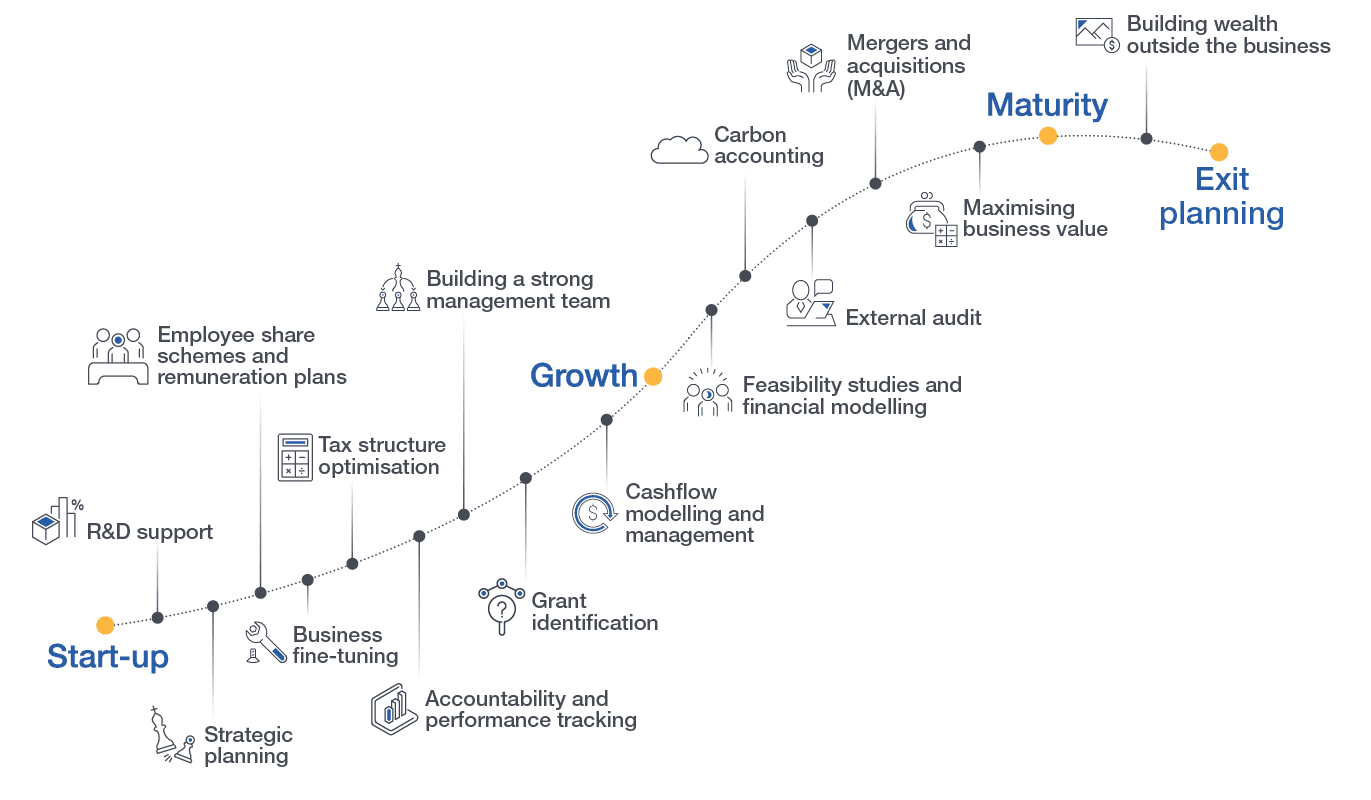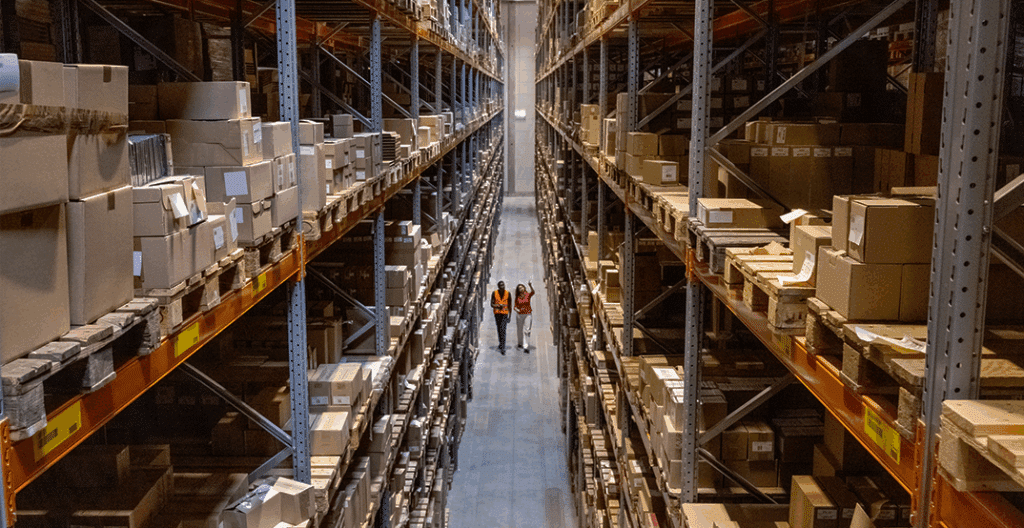Currently undergoing the ‘fourth industrial revolution’ encompassing robotics and automation, data analytics, artificial intelligence and machine learning the manufacturing sector is characterised by disruption. Manufacturers are faced with the challenges of balancing continuous improvement and investment in new technologies with profitability and managing risk.
Our team works with a diverse range of manufacturers to help them thrive in this complex environment. We believe in going beyond traditional accounting services, engaging with manufacturers proactively and collaboratively, leveraging our expertise and resources to drive your success.
Our commitment goes beyond delivering accurate financial information. We strive to build strong relationships with our manufacturing clients, actively engaging with you to drive growth, efficiency and financial success. Together, we can unlock the full potential of your manufacturing business.
Who we serve
We have industry expertise across a broad range of manufacturing businesses, including those in:
- General engineering
- Defense
- Electronics
- Energy
- Engineering design
- Food & beverage
- Construction & infrastructure
- Environment & sustainable energy
- Machinery & equipment
- Mining, oil & gas
- Packaging
- Pharmaceuticals
- Plastic & chemicals
- Transport & marine
- Telecommunications
Supporting you at every step
Explore Our Interactive Business Growth Lifecycle
Through each stage of growth, we are focused on understanding your business, its goals and objectives and overcoming any challenges that may arise. Whether it is business planning, forecasting, funding or just making sure your risks and obligations are understood and managed, we partner with you to help your business grow profitably and sustainably.

R&D support
Learn how to maximise your R&D Tax Incentive claim before the financial year-end with simple steps and important considerations. Understand eligibility, required documentation, and the process of claiming the incentive for Australian businesses.
Feasibility studies and financial modelling
William Buck’s financial modelling services help businesses make strategic decisions by creating customised models. Our expertise includes designing integrated models, sensitivity analyses, and investment opportunity assessments tailored to your specific needs.
Building wealth outside the business
Develop wealth creation, retirement, and superannuation strategies with William Buck. Our advisors integrate investments, transactions, and tax planning to ensure the most tax-effective and profitable outcomes for your business and personal wealth.
Building a strong management team
William Buck’s Strategic Business Consultancy helps businesses thrive by developing robust strategies for growth. Our process includes vision setting, environmental assessment, and strategy implementation, ensuring your business is well-prepared for future challenges.
Strategic planning
Gain a competitive advantage with strategic planning and timely decisions. Our specialist advisors offer expert advice on business restructuring, funding, mergers, valuations, risk management, and more, helping you focus on day-to-day management while planning for future growth.
Employee share schemes and remuneration plans
Explore the tax implications and benefits of setting up an employee share scheme or stock option plan in Australia. Understand the startup concession, tax deferral options, and key considerations for aligning company and employee interests.
Tax structure optimisation
Proactive tax planning for small businesses helps maximise returns and reduce liabilities. Understand key strategies like instant asset write-off, small business energy incentives, and more. Learn how to optimise your tax position before year-end.
Business fine-tuning
Discover how William Buck can ease the burden of tax compliance and reporting, ensuring your business meets all requirements efficiently. Our expert team handles everything from tax returns to strategic advice, letting you focus on growth.
Accountability and perform tracking
William Buck’s Virtual CFO services offer dedicated finance leaders providing strategic advice, performance measurement, data analysis, and cash flow management. Scalable and flexible, our VCFO solutions ensure proactive financial leadership tailored to your business needs.
Grant identification
Learn about the updated Export Market Development Grant scheme. Understand the shift to upfront funding, new tiered system, and application process to maximise your business’s export marketing potential with William Buck’s expert guidance.
Cashflow modelling and management
Ensure your cash flow forecast meets the requirements of ASA 570 Going Concern. Learn key essentials to manage with your auditor, including timing, flexibility, and comprehensive control over working capital.
Sustainability Reporting
Australia’s sustainability reporting framework is now in effect and requires certain entities reporting under Chapter 2M of the Corporations Act 2001 to prepare a sustainability report.
External audit
William Buck’s external audit services ensure the accuracy of your financial statements, contributing to better decision making and risk management. Our tailored audit plans focus on key value drivers and critical risk areas for your business.
Mergers and acquisitions
William Buck provides end-to-end support for mergers, acquisitions, and divestments. From due diligence to post-acquisition integration, our team ensures optimal strategic, financial, and cultural fit, helping you make informed decisions and maximise value.
Maximising business value
Maximise your business value and minimise tax with William Buck’s Exit Smart Report 2023. Discover key insights and practical tips for successful exit planning, ensuring a favourable financial outcome.
REDARC – From a small shed to a global stage
When Anthony and Michele Kittel took over a modest South Australian electronics business, they dreamed of building something world-class. That dream needed more than determination — it needed trusted advice every step of the way.
Services built around you
We work with you to build your business. Whether you are a manufacturer, supplier, or transporter, our team is equipped to deliver successful outcomes for your business.
Resources to go global
We operate across international waters. Our Praxity network has over 880+ offices in 120 countries and most major cities. We have the global reach to help you scale your business and enter new markets. If you aspire to grow, we have the team to help you develop a successful global expansion strategy.
Latest insights from our Manufacturing team
Manufacturing Industry Specialists
Explore other industries
Agribusiness
A diverse industry that contributes significantly to Australia’s economy, Agribusiness is up against an increasing number of challenges to operating profitably. We can help you navigate the impacts of shifting tax legislating, a fluctuating economy and variable commodity prices to reach results at each stage of your business’ lifecycle.
Education
New Zealand’s ever-changing and competitive education sector is experiencing a period of both growth and disruption. New service models emerged throughout the pandemic along with changing demands from parents and students. Our experienced advisors can assist you to meet these demands and leverage opportunities for expansion both here and internationally.
Government
Increased accountability, competing stakeholder needs and restricted budgets are just some of the demands faced by government entities today.
Health
Rapidly accelerating technological developments, a growing and ageing population, increasing demands from patients for affordable and remote services, a lack of substantial funding and impacts of a continuing pandemic are just some of the challenges this vital sector is up against. Despite the potential issues caused by these challenges, they also present opportunity.
Hospitality & Tourism
Acute workforce shortages and unstable supply chains continue to threaten our hospitality and tourism industries, which bore the brunt of Australia’s response to the pandemic. Nevertheless, the sectors are demonstrating considerable resilience and face a prosperous future as borders reopen and consumer confidence improves.
Mining & Energy
Located on the doorstep of growing populations and emerging economies, with diverse and abundant mineral and energy reserves and a skilled workforce, Australia is poised to benefit from the rising international demand for resources through continued inbound investment and cross-border opportunities in the sector.
Not for Profit
Good corporate governance, flexibility and an understanding of changing regulatory requirements are the keys to success in Australia’s purpose-driven not for profit sector. Highly collaborative organisations work with government entities and private businesses to make long lasting impact and deliver for Australians.
Professional Services
A strong and emerging industry in Australia, professional services practitioners operate in franchising, legal and accounting, advertising, engineering, business consulting and many more. Key concerns for the sector are skilled workforce shortages, staff retention and changing regulations.
Property & Construction
As your property specialists, We’re here to help you lay a solid foundation by structuring your project in a commercially attractive manner while managing your tax position to maximise project return. Our scalable solution means you can engage us for a specific part of your development or the entire project.
Property & Construction
As your property specialists, We’re here to help you lay a solid foundation by structuring your project in a commercially attractive manner while managing your tax position to maximise project return. Our scalable solution means you can engage us for a specific part of your development or the entire project.
Retail & Wholesale
Largely consisting of SME businesses, Australia’s highly competitive retail and wholesale industry attracts players from many overseas markets. While the pandemic had markedly different impacts on the various subsectors of the industry, eCommerce benefitted from the temporary shutdown of physical stores and increased online shopping – a trend which has continued.
Technology
Fast growing and aspirational, Australia’s tech sector is currently the third highest contributor to gross domestic product and employs over half a million people. William Buck has significant experience assisting SaaS companies and other tech subsectors to scale, raise capital, identify growth opportunities in transactions and manage divestment mandates.
Transport & Distribution
While previously segregated into several subsectors, the industry is increasingly integrated and employs over half a million people across the country. With new technology including automation shaping the industry, new and emerging skills and business processes are required.









































































